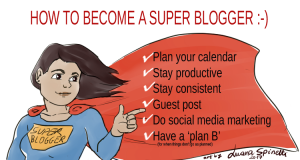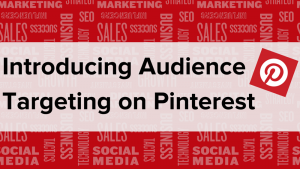With the recent popularity of social media, marketers are questioning the role of email in their marketing strategy. The reality is that despite the growth of social media advertising, email remains one of the highest ROI and most measurable marketing tools available for small businesses.
Email not only has a high ROI, but shoppers who come to a website via email marketing, shop more and spend more according to the recent Forbes article, “Why Email is Still More Effective Than Social Media Marketing.” The acquisition channel growth chart, recently published on the Vertical Response Marketing Blog, confirms the success of email marketing in new customer acquisition, reporting it as the second leading channel for customer acquisition growth, just behind organic search.
You can set yourself up for success with email marketing by measuring the effectiveness of each campaign and understanding what you can do to increase your campaign performance.
Key Email Metrics
Unlike social media strategies your email marketing is easily measurable. Monitoring your unique open rate, bounce rate, click through rate, unsubscribe rate, and conversion rate can help to determine your email marketing success.
The unique open rate tells marketers what percentage of people who received an email actually opened it. In order to find out the percentage of people who actually received the email you have to subtract the number of bounced or non-delivered emails from your entire list and then divide that number into the number of emails opened. The formula is:
Unique Open Percentage Rate = unique opens divided by the (number of total messages sent — messages bounced) x 100.
Tip: If you have a bounce or non-deliverable rate of more than 1 percent it may indicate that your list needs to be cleaned or updated.
Recent open rate research by industry leader Marketo shows that average email open rates have increased from about 19 percent in 2012 to 22 percent in 2013. However, opened emails only show an initial level of interest. To further understand your email marketing effectiveness you need to learn how many people were actually engaged enough by your email to take an action. This is called the Open to Click Rate.
Open to Click Rate = Total number of clicks divided by the number of tracked mail opens x 100.
Once you know how many people are clicking on your call to action you can employ several different strategies to measure your email campaign conversion rate. Conversion rates show how many people take the specific actions that you want after they receive and open your email. While common conversions include downloading information, completing forms, requesting quotes, and making purchases, they can include any action that you want email recipients to take. Often, methods for tracking conversion include building unique landing pages, implementing call tracking, adding printable coupons, specific calls to action, and integrating those efforts with website analytics. While this does all require additional effort, the data you gather can show you exactly how successful your email marketing campaigns are.
Mobile Changes Everything
The Pew Internet and American Life Project in 2012 showed that 88 percent of people check their email every day, and that mobile devices are now the dominant device that people use to get email with more than 50 percent of mobile phone users reading email on their phones. This puts even more importance on the subject, headlines, value statements, and calls to action of any email effort.
Let’s face it, given the sheer volume of email businesses and professionals receive every day, your email better make an impression quickly. If it doesn’t, it’s probably going to have open rates, open to click rates, and conversion rates well below your expectations. So how do you make a relevant impression in just a few seconds?
Relevant Content Meets Customer Needs
Clearly, you make an impression with content that is relevant to the customer’s needs. When you have a solid understanding of what your prospective customer wants at each stage of their buying cycle you can customize your subject, headline and call to action to deliver your message quickly and effectively to meet the customer’s needs and interests throughout their buying cycle.
The first impression your email makes is through the subject line and who the email is from. When your subject is of interest to your audience you will have earned a few more seconds to further engage them with a value statement, offer, and call to action. Once your recipient opens the email they will likely read the headline and the first few lines only. This is your chance to provide enough value and a compelling offer to motivate the reader to take an action. Keeping your email simple and easy to read only enhances the likelihood that readers will respond the way you want.
There’s a reason that your inbox is often full of new email messages every day, and it’s quite simple. People use email daily, it works, and according to global management consulting firm McKinnsey & Co, email marketing is 40 times more effective than Facebook and Twitter combined as a way to acquire new customers. With that said, never forget that while email is still very effective as a core marketing tool the best marketing results come from combining channels throughout your customer’s buying cycle to influence their purchasing decisions.
To learn more about how marketing fits into your online presence check out The 11 Essentials of a Successful Web Design.
Read more on Huffington Post
(417)
Report Post



